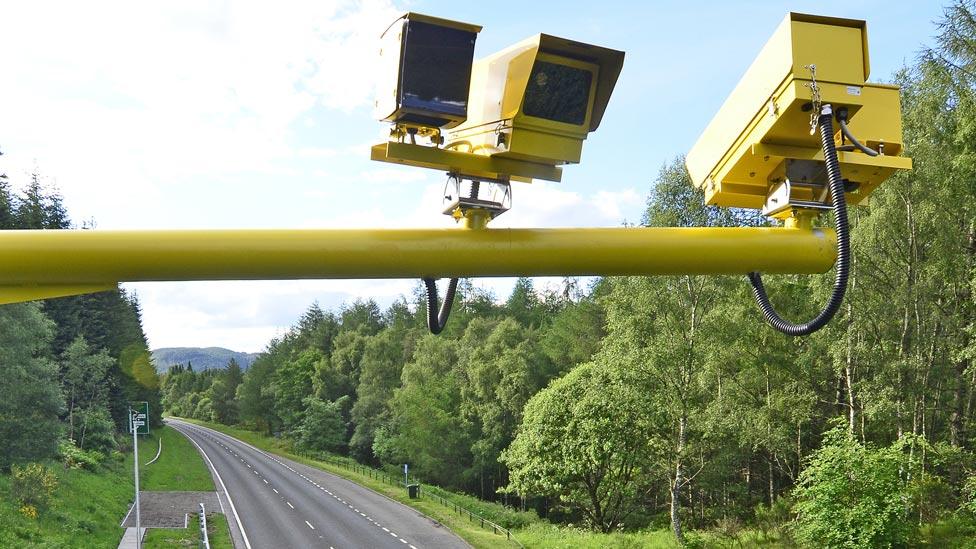Average-speed camera coverage in UK 'doubles' in three years
- Published
- comments
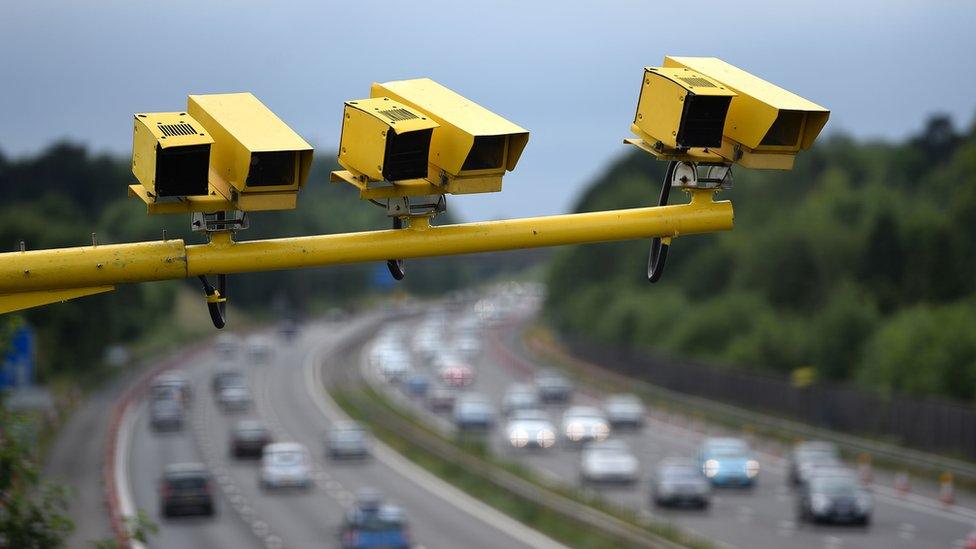
More than 260 miles of UK roads are permanently monitored by average speed cameras
The length of the UK road network covered by permanent average-speed cameras has more than doubled since 2013, new figures have revealed.
Research obtained by the BBC's The One Show found 51 stretches of road are permanently managed by the cameras, covering 263 miles in total.
Schemes range from less than a mile on Tower Bridge in London, to 99 miles on the A9 between Dunblane and Inverness.
Transport Scotland said the cameras had helped reduce casualties on the road.
Unlike traditional speed cameras, average-speed cameras work by recording the time it takes a vehicle to travel between two positions on the road.
The devices - which were first introduced in the UK in 2000, in Nottingham - covered a total distance of 127 miles in 2013.
However, research conducted for the RAC Foundation found more than 130 miles of roads have since had the cameras installed on them, with 12 systems installed last year alone.
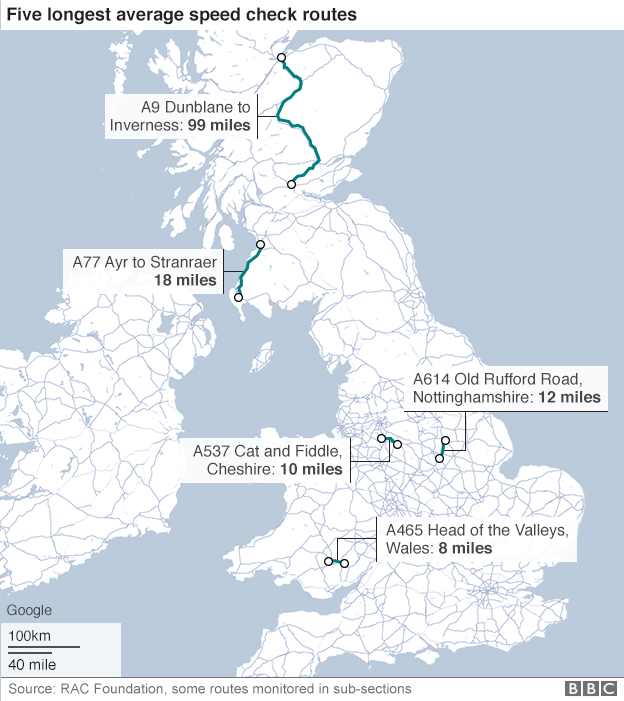
The RAC Foundation, which said the analysis was the first of its kind, found several roads were monitored by more than one set of cameras.
The new data excludes sites where average-speed cameras are deployed temporarily, such as to monitor speed limits through motorway roadworks.
In 2014, a scheme covering almost 100 miles of the A9, between Dunblane and Inverness, was installed - the longest stretch on a single road in the UK.
The longest stretch in England is on the A614 Old Rufford Road near Ollerton, Nottinghamshire, which is 12 miles long.
There are two stretches of road covered by average-speed cameras in Wales, on the M4 at Port Talbot and on the A465 between Dowlais Top and Hirwaun, and one in Northern Ireland, on the A2 between Bangor and Holywood.
Cost falling
Richard Owen, from Road Safety Analysis, which carried out the research, said the cost of introducing the cameras had fallen in recent years, making the devices more appealing for local authorities.
The cost was now typically about £100,000 per mile, compared with about £1.5m per mile in the early 2000s, he said.
"Some of the old fixed-speed cameras have been around for 25 years and they are based on 35mm film," he added.
"They are coming to the end of their life so as they are replaced, they're sometimes getting replaced with average-speed camera systems."

Cameras cover less than a mile on London's Tower Bridge
Transport Scotland - which is responsible for managing the £3m scheme on the A9 - said the cameras had led to a fall in the number of those killed on the road.
There were six deaths in the first full year of the project, it said, compared with an average of eight in previous years.
However, anti-speed camera campaigner Mike Burns said the system was the "wrong solution" and money should instead be spent on turning the whole of the A9 into a dual carriageway.
Plans have already been announced to turn 80 miles of single carriageway between Perth and Inverness into dual carriageway by 2025, costing £3bn.
In March, the House of Commons' Transport Committee recommended further use of average-speed cameras on British roads, as they "are generally better received by motorists than traditional fixed-speed cameras".
It said the schemes could "reduce the impression that motorists are unfairly caught out by speed cameras".
For a full report, watch The One Show on BBC One, at 19:00 BST on Tuesday 31 May.
- Published21 April 2016
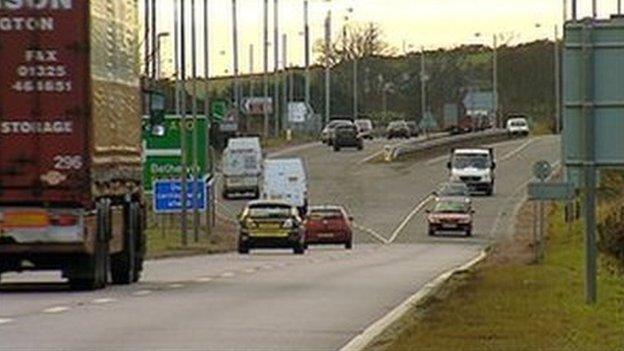
- Published26 January 2015
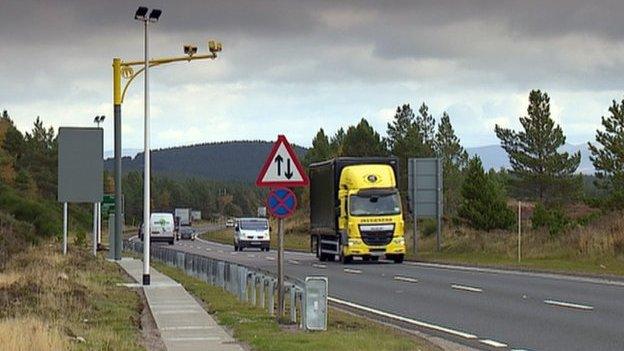
- Published28 October 2014
